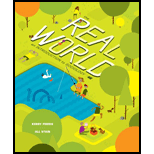
Concept introduction
Symbolic interactionism, the conflict theory, and functionalism can provide a look into all levels of the educational system.
Explanation of Solution
Suggested response
Consider the idea from the symbolic interactionist perspective. Upon studying elementary students, theorists contend that the expectations that teachers have of students will have an effect on their performance. Now think about this at the college level. Do teachers place those same expectations on students? Think about the lecture hall of 150 students. Does the instructor know all students and place expectations on them? Consider how elementary and high school students remain with the same teacher, usually for a school year. Now picture the college student who might see the instructor for a few hours a week for several months. How might this have an impact on the expectation of the teacher?
Conflict theorists contend that those who come from wealth have access to a better education than those who come from poorer areas. Schools in rich districts can provide more resources than schools in low-income areas. When thinking about this in terms of college, consider how those with access to resources might have more of a chance to attend and complete a postsecondary degree. Think about the money involved in obtaining a college degree and how those with few resources might have difficulty doing so, once again leading to an unequal playing field.
Functionalists believe there is a place for everyone in society. Schools reproduce the class structure that is in place so that every job will be covered by someone. There is a need for blue collar workers, white collar workers, and top level managers. Think about how by allowing schools in both wealthier and poorer districts to reproduce what is occurring in society, we might keep society stable and fulfill all roles. Consider how functionalists might think that college is not necessary for all students because college degrees are not needed for many job that need to be filled in society.
Want to see more full solutions like this?
Chapter 10 Solutions
The Real World
- DEVELOPMENT OF ONE’S PERSPECTIVE OF SELF (EPAS 2.1.1.2, 2.1.1.3; EPAS 2.1.2.1, 2.1.2.3; EPAS 2.1.3.1; EPAS 2.1.6.1; EPAS 2.1.7.2; EPAS 2.1.8.2) This paper (aka Development of Self or DOS) is designed to help students begin to identify their own values, develop critical thinking skills in analyzing social and personal forces, demonstrates knowledge of the psychological forces that impact the individual, and identify their own assumptions of how people change. You are to describe your cultural background, values and beliefs associated with your group identities, and discuss how these attributes and dimensions of who you are influence your attitudes toward and interactions with others who are “different,” as well as their attitudes toward and interactions with you.1 In doing so, this assignment is an in-depth examination of the various micro-system issues related to human behavior and their impact on your personal development. This assignment requires you to write a critical…arrow_forwardPolitical factions consist of a-Like minded individual b-Opposing groups c-Political fragmentation d-Political fusionarrow_forwardHow are individual-level white collar crimes and corporate crimes similar? Please Include in thethe discussion on whether causal factors explain these crimes is similar. Please include references.arrow_forward
- humanized short answers- What strategies could be used to help students with hearing loss to access the curriculum? What strategies can be used to help students with hearing loss be a part of the classroom community?arrow_forwardshort simple humanized answer each- How did the field of deaf education evolve, and what is the history of the debate between oral and manual communication? How are the terms deaf and hard of hearing defined? What are some characteristics of children with hearing difficulties, and why must we consider the degree, type, and age of onset of the hearing loss? What are some causes of hearing loss? How is hearing loss detected, and why is early intervention so critical? How can varying hearing levels affect a student’s cognitive, academic, social, and language development, and what can be done to maximize a student’s communication potential? What kinds of educational responses are needed for students who are deaf and hard of hearing?arrow_forwardShould U.S. foreign policy include provisions for reducing poverty in other nations of the world? Should U.S. domestic policy include provisions for reducing poverty in the United States? How are these issues similar? How are they different?arrow_forward
- Discuss Chapter 1 of Barry Glassner’s “The Culture of Fear.” Student’s may address but are not limited to discussing how the media uses individual scenarios to falsely give a wider perception of some kind, the media’ use of exaggerations and assertions and the financing of fear.arrow_forwardTake something (physical, personal or social) and change it. Tell us, what you started out with, what it looked like after you changed it, and what you did to make the change.arrow_forwardhumanized answers and couple of sentences for each: How did the field of gifted education evolve, and why is it important for giftedness to be recognized as an exceptionality? How do we define “gifts and talents,” and how are students identified? What are some characteristics of students with gifts and talents, and how can the information processing model (IPM) help us understand their needs? Why do students from culturally and linguistically different or socioeconomically disadvantaged homes and twice exceptional student continue to be under-identified for gifted-educational supports and services? What educational responses are needed to address the strengths and challenges of students with gifts and talents? What life course considerations are important for students with gifts and talents?arrow_forward
 Social Psychology (10th Edition)SociologyISBN:9780134641287Author:Elliot Aronson, Timothy D. Wilson, Robin M. Akert, Samuel R. SommersPublisher:Pearson College Div
Social Psychology (10th Edition)SociologyISBN:9780134641287Author:Elliot Aronson, Timothy D. Wilson, Robin M. Akert, Samuel R. SommersPublisher:Pearson College Div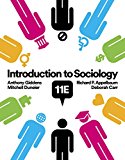 Introduction to Sociology (Eleventh Edition)SociologyISBN:9780393639407Author:Deborah Carr, Anthony Giddens, Mitchell Duneier, Richard P. AppelbaumPublisher:W. W. Norton & Company
Introduction to Sociology (Eleventh Edition)SociologyISBN:9780393639407Author:Deborah Carr, Anthony Giddens, Mitchell Duneier, Richard P. AppelbaumPublisher:W. W. Norton & Company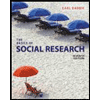 The Basics of Social Research (MindTap Course Lis...SociologyISBN:9781305503076Author:Earl R. BabbiePublisher:Cengage Learning
The Basics of Social Research (MindTap Course Lis...SociologyISBN:9781305503076Author:Earl R. BabbiePublisher:Cengage Learning Criminalistics: An Introduction to Forensic Scien...SociologyISBN:9780134477596Author:Saferstein, RichardPublisher:PEARSON
Criminalistics: An Introduction to Forensic Scien...SociologyISBN:9780134477596Author:Saferstein, RichardPublisher:PEARSON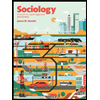 Sociology: A Down-to-Earth Approach (13th Edition)SociologyISBN:9780134205571Author:James M. HenslinPublisher:PEARSON
Sociology: A Down-to-Earth Approach (13th Edition)SociologyISBN:9780134205571Author:James M. HenslinPublisher:PEARSON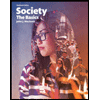 Society: The Basics (14th Edition)SociologyISBN:9780134206325Author:John J. MacionisPublisher:PEARSON
Society: The Basics (14th Edition)SociologyISBN:9780134206325Author:John J. MacionisPublisher:PEARSON





